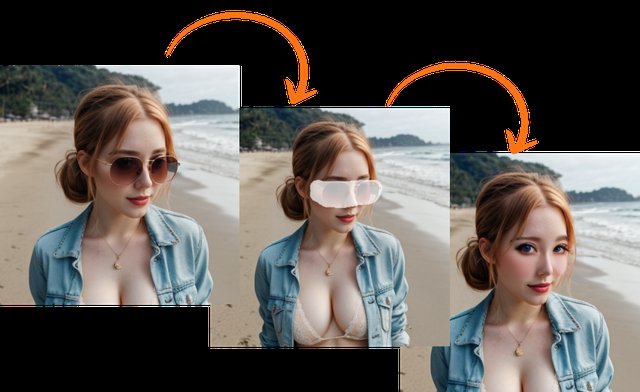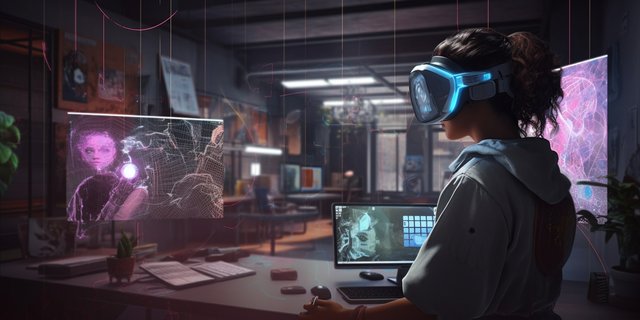Exploring the Key Features of Nudify AI: A Deep Dive
Nudify AI, a cutting-edge technology, has emerged as a powerful tool with both creative and controversial applications. By leveraging advanced machine learning algorithms, this technology can manipulate images and videos to generate highly realistic, often explicit, content. This article delves into the key features of
Contents
- Exploring the Key Features of Nudify AI: A Deep Dive
- 1. Realistic Image Simulation
- a. Texture and Skin Tone Accuracy
- b. Lighting and Shadow Integration
- 2. Customizability and Flexibility
- a. Control Over Detail Levels
- b. Adaptation to Body Types and Features
- c. Clothing Removal Simulation
- 3. Ethical Safeguards and User Guidelines
- a. Consent Verification Systems
- b. Watermarking Generated Content
- c. Content Moderation Algorithms
- 4. AI-Powered Content Analysis
- a. Object and Context Recognition
- b. Anatomical Mapping
- c. Machine Learning for Continuous Improvement
- 5. Integration with Other Technologies
- a. Compatibility with Design Software
- b. Virtual and Augmented Reality
- c. Application in 3D Modeling
- 6. Creative and Practical Applications
- a. Art and Photography
- b. Education and Training
- c. Fashion and Design
- d. Entertainment and Gaming
- 7. Future Prospects
- a. Improved Real-Time Processing
- b. Expanded Customization Options
- c. Stronger Ethical Frameworks
- Potential Applications
- Conclusion
- FAQs
- 1. What is Nudify AI?
- 2. What are the key features of Nudify AI?
- 3. What are the potential applications of Nudify AI?
- 4. What are the ethical concerns associated with Nudify AI?
- 5. How can we mitigate the risks of Nudify AI?
1. Realistic Image Simulation

At the heart of Nudify AI lies its ability to create realistic image simulations. By leveraging advanced deep learning algorithms and generative adversarial networks (GANs), this tool can produce lifelike depictions of human forms. The realism achieved by Nudify AI stems from its sophisticated training datasets, which enable the tool to understand and replicate textures, lighting, and anatomical details with precision.
a. Texture and Skin Tone Accuracy
One of the standout features of Nudify AI is its capability to match skin tones and textures seamlessly with the original image. This level of detail ensures that the generated output looks authentic and blends naturally with the surrounding elements of the image.
b. Lighting and Shadow Integration
Lighting plays a crucial role in making AI-generated images appear realistic, and Nudify AI excels at analyzing the light sources in the original image and ensuring that the generated elements align with those light conditions. Shadows and highlights are adjusted dynamically to enhance realism.
2. Customizability and Flexibility

Nudify AI offers extensive customization options, allowing users to tailor the output to meet specific requirements. This flexibility is one of the key reasons for its growing popularity in creative fields such as art, animation, and virtual modeling.
a. Control Over Detail Levels
Users can adjust the level of detail in the generated image. For instance, in artistic projects, creators may prefer subtle representations, whereas in more scientific or educational applications, higher precision may be necessary. Nudify AI provides sliders or tools to modify these details effortlessly.
b. Adaptation to Body Types and Features
Nudify AI can accommodate a wide range of body types, ensuring diversity and inclusivity in its simulations. Whether the user needs to simulate a specific body shape, size, or posture, the tool offers options to fine-tune these aspects.
c. Clothing Removal Simulation
Nudify AI is often recognized for its clothing removal simulation feature. This involves analyzing the clothing in the original image and generating an estimated depiction of the body underneath, considering factors such as fabric tightness, posture, and underlying anatomy.
3. Ethical Safeguards and User Guidelines

Given the ethical concerns associated with nudify technology, many developers are integrating safeguards into these tools. Nudify AI, for instance, incorporates several features to ensure its responsible use.
a. Consent Verification Systems
To prevent misuse, Nudify AI includes mechanisms to verify the consent of individuals in the images being processed. Users are required to confirm that they have the right to use the image and that the individuals depicted have provided explicit consent.
b. Watermarking Generated Content
To discourage unauthorized sharing or misuse, Nudify AI automatically watermarks the generated images. These watermarks indicate that the content has been AI-generated, helping to maintain transparency and accountability.
c. Content Moderation Algorithms
Nudify AI incorporates AI-powered moderation systems to detect and prevent inappropriate or harmful usage. For example, it can block images of minors or content that violates ethical guidelines, ensuring compliance with legal and moral standards.
4. AI-Powered Content Analysis

One of the most impressive features of Nudify AI is its ability to analyze content with incredible detail. This involves understanding the context of the image, recognizing objects, and processing anatomical structures with accuracy.
a. Object and Context Recognition
Before generating any output, Nudify AI analyzes the original image to identify objects, backgrounds, and the overall scene. This contextual understanding helps the tool produce outputs that blend seamlessly with the existing elements.
b. Anatomical Mapping
Nudify AI uses advanced anatomical mapping to ensure that the simulated nudity aligns with the natural proportions and features of the human body. This includes accurate positioning of muscles, bones, and other structural elements.
c. Machine Learning for Continuous Improvement
The AI model behind Nudify AI is designed to learn and improve over time. With every interaction, it refines its understanding of human anatomy, textures, and artistic nuances, ensuring better results with each iteration.
5. Integration with Other Technologies

Nudify AI’s versatility is amplified by its ability to integrate with other tools and technologies. This makes it a valuable asset across various industries and applications.
a. Compatibility with Design Software
Nudify AI can be integrated with popular design software such as Adobe Photoshop, Blender, and Maya. This allows artists and designers to incorporate its features into their workflows seamlessly.
b. Virtual and Augmented Reality
In the realms of virtual and augmented reality, Nudify AI can be used to create realistic avatars and virtual models. By simulating lifelike representations of the human body, it enhances immersive experiences in gaming, VR simulations, and educational tools.
c. Application in 3D Modeling
Nudify AI’s ability to generate accurate body simulations makes it an excellent tool for 3D modeling. It can help create anatomically correct 3D models for use in industries such as healthcare, fashion, and entertainment.
6. Creative and Practical Applications
While nudify technology often raises eyebrows, it also has legitimate and constructive applications when used ethically. Nudify AI, in particular, has proven to be a valuable tool in several fields.
a. Art and Photography
Nudify AI enables artists and photographers to explore the human form in new and creative ways. From conceptual art to avant-garde photography, the tool provides endless possibilities for experimentation.
b. Education and Training
In educational settings, Nudify AI can be used to teach anatomy, body mechanics, and other subjects that require a detailed understanding of the human body. This makes it a valuable resource for medical students, fitness trainers, and other professionals.
c. Fashion and Design
The fashion industry can use Nudify AI to create virtual models that accurately represent various body types. This can help designers visualize how garments fit and adapt their designs to ensure inclusivity.
d. Entertainment and Gaming
In the gaming and entertainment industries, Nudify AI can help create lifelike characters and avatars. By simulating realistic human forms, it enhances the visual quality and immersion of digital media.
7. Future Prospects
The future of Nudify AI is promising, with potential advancements in realism, efficiency, and ethical safeguards. Developers are likely to focus on enhancing its features while addressing concerns related to privacy, consent, and misuse.
a. Improved Real-Time Processing
Future iterations of Nudify AI may offer real-time processing capabilities, allowing users to interact with the tool dynamically. This could be particularly useful in VR and AR applications.
b. Expanded Customization Options
As AI technology advances, Nudify AI will likely offer even more customization options, including the ability to simulate different cultural aesthetics, artistic styles, and body modifications.
c. Stronger Ethical Frameworks
To ensure its responsible use, Nudify AI will likely incorporate more robust ethical frameworks and consent verification systems. These measures will help build trust and credibility for the technology.
Potential Applications
Despite its limitations, Nudify AI has the potential to be used for a variety of applications:
- Entertainment: Creating special effects, generating realistic characters, and enhancing video game graphics.
- Education: Developing interactive learning tools and simulations.
- Healthcare: Analyzing medical images to detect diseases and injuries.
- Security: Identifying and preventing fraud and cybercrime.
Conclusion
Nudify AI is a powerful tool with the potential to revolutionize various industries. However, it is essential to use this technology responsibly and ethically. By understanding the limitations and potential risks, we can harness the power of Nudify AI to create innovative and beneficial applications.
Note: It's important to emphasize that the use of Nudify AI for malicious purposes, such as creating deepfakes to harm individuals or spread misinformation, is highly unethical and illegal. As technology continues to advance, it is crucial to develop ethical guidelines and regulations to ensure the responsible use of AI.
FAQs
1. What is Nudify AI?
Nudify AI is a sophisticated AI-powered tool capable of manipulating images and videos. It utilizes advanced machine learning techniques to enhance, restore, edit, and even generate entirely new content.
2. What are the key features of Nudify AI?
Nudify AI offers a range of features, including:
- Image manipulation: Enhancing, restoring, and editing images.
- Video manipulation: Stabilizing, editing, and enhancing videos.
- Deepfake generation: Creating realistic deepfakes through face swapping, voice cloning, and body morphing.
3. What are the potential applications of Nudify AI?
Nudify AI has potential applications in various fields:
- Entertainment: Creating special effects, generating realistic characters, and enhancing video game graphics.
- Education: Developing interactive learning tools and simulations.
- Healthcare: Analyzing medical images to detect diseases and injuries.
- Security: Identifying and preventing fraud and cybercrime.
4. What are the ethical concerns associated with Nudify AI?
The misuse of Nudify AI, particularly in creating non-consensual deepfakes, raises significant ethical concerns. It can lead to privacy violations, reputation damage, and the spread of misinformation.
5. How can we mitigate the risks of Nudify AI?
To mitigate the risks, it's crucial to:
- Promote ethical use: Encourage responsible use of the technology and develop ethical guidelines.
- Develop detection tools: Create tools to identify and flag deepfakes.
- Educate the public: Raise awareness about the potential harms of deepfakes and how to spot them.
- Strengthen legal frameworks: Enact laws to deter the creation and distribution of harmful deepfakes.